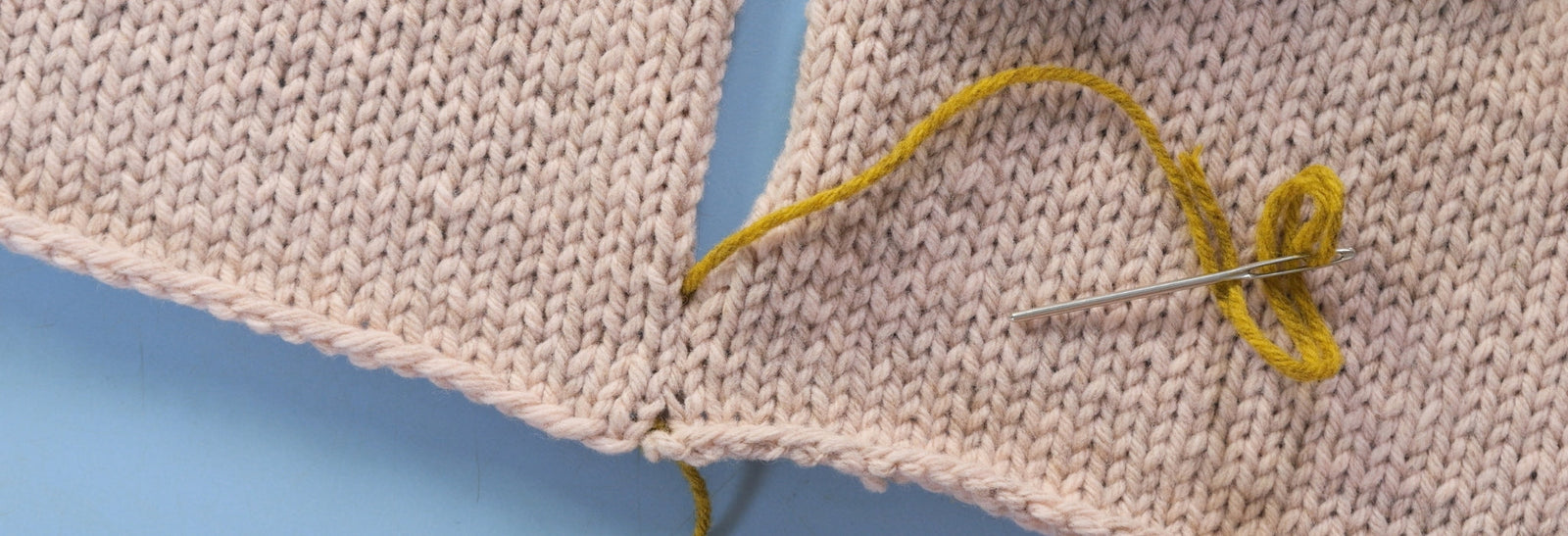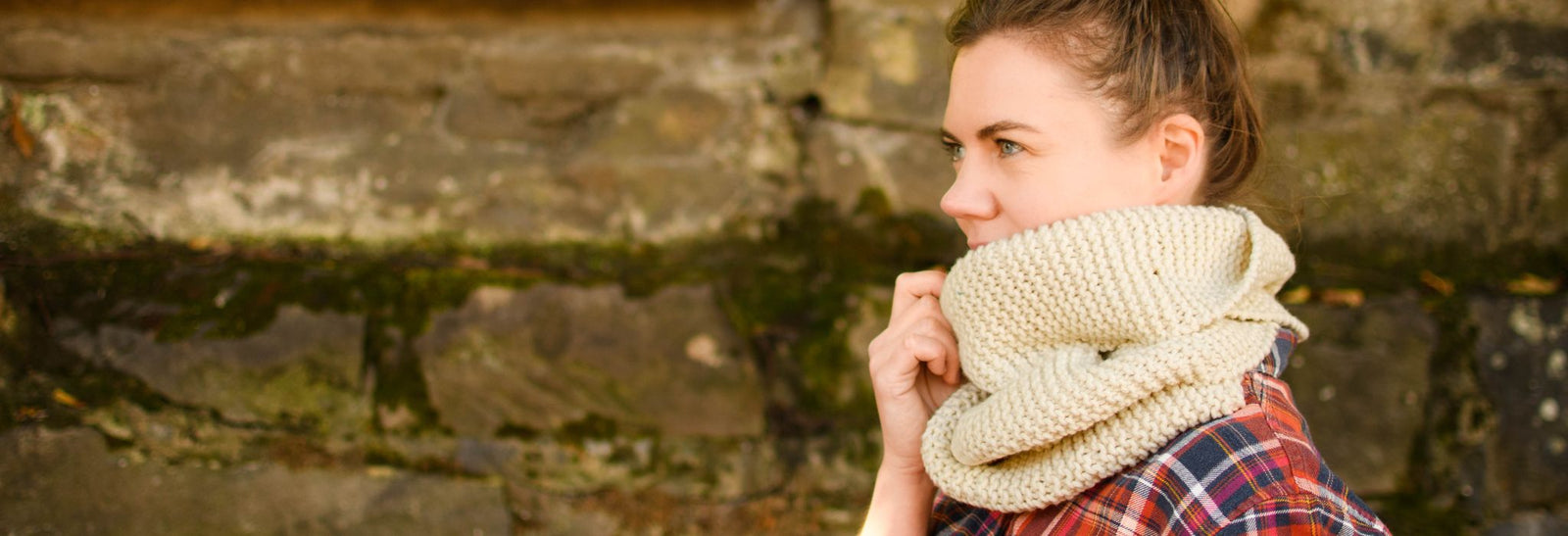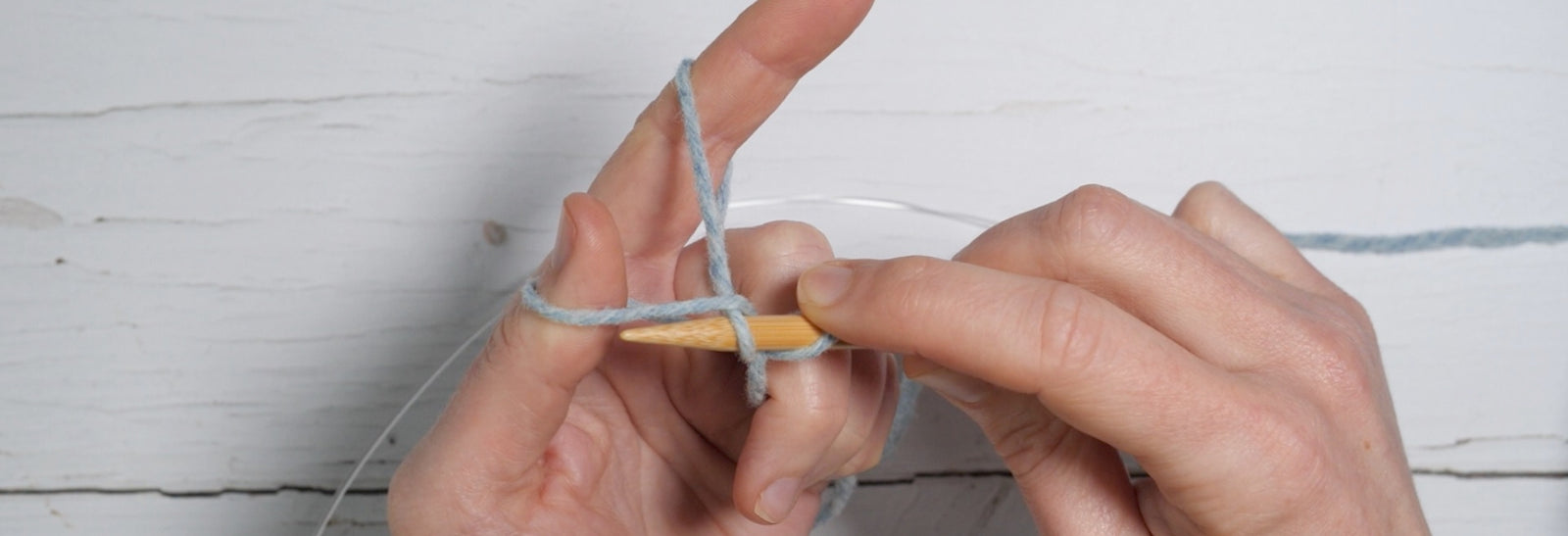Your Cart is Empty

Learn to knit: How to knit a swatch
May 13, 2021

Knitting a swatch serves several important functions in your knitting life. It’s the best way to ensure your knitting gauge matches the pattern gauge, so that your project comes out the correct size and shape. It’s also a great way to familiarise yourself with new stitch patterns and techniques before embarking on your project.
While it isn’t as necessary to match pattern gauge for items that don’t need to fit a particular body part (such as wraps and scarves), it is important to make sure you like the fabric that is created. The yarn may work up thinner or thicker than you thought, or maybe it has a texture or colour that could conflict with the stitch pattern. Swatching before beginning your project is insurance against unexpected surprises, and it shouldn’t be a chore - it’s more of a warm-up to your project!
Read on for our tutorial taking you step-by-step through the process of knitting a swatch. All images were styled and photographed by our friend and contributor Nidhi Kansal.
How big does my swatch need to be?

About 5-6” square (12-16cm) is a good size for a swatch to check your gauge. In practice, this is usually between 20-40 stitches.

If there is a stitch pattern with a defined repeat, cast on a number of stitches that will work for the repeat, plus a couple on each side for an edging.
Example: Pattern repeat of a multiple of 8 stitches + 5.
24 stitches would be 3 repeats, plus 5 more stitches is 29.
Add 2 stitches to each end for a total cast on number of 33 stitches.
How to Swatch

With your project yarn and needles, begin by casting on with your preferred method, or the method given in the pattern. If it’s a cast on method that you haven’t worked before, this is a great way to try it out and see if you like it.
Work a few rows of a flat stitch such as garter stitch, ribbing, or seed stitch (or the stitch used in the pattern) to anchor the bottom edge of the swatch, so it doesn’t curl up.
Then, keep working the first and last 2-3 stitches of every row in garter stitch, to prevent the sides from curling inward.

Work at least 4” (10cm) in stockinette stitch or the pattern stitch, following the pattern repeats if necessary.
Then work a few more rows in garter stitch or ribbing and bind off. You don’t have to weave in your ends if you don’t want to! Take a photo and/or write down what needles you used so you don’t forget.

Wash your Swatch

Always treat your swatch the way you will the finished piece. Some yarns change significantly after a relaxing bath.
If you plan to hand wash, soak the swatch in water with a little wool wash (link) for at least 10 minutes, then squeeze out the water and dry flat.
If you plan to machine wash, you can throw the swatch in with your laundry - just make sure it doesn’t go through the dryer!

For lace patterns, pinning out your swatch is probably a good idea. For more solid fabrics or sweaters, I suggest just smoothing the swatch a bit rather than pinning it, to prevent excess stretching.
Counting the Stitches

Once your swatch is dry, you can take your gauge. In stockinette stitch, each stitch appears as a “V” on the right side of the fabric. A swatch measuring tool [https://ysolda.com/collections/sundries/products/swatch-measurement-tool] helps by narrowing the field that you’re looking at, helping you count straight across, and holding down the edges of the swatch. Or you can use a ruler or tape measure.

Count the number of V-shapes across one row, over 2 or 4 inches. To count rows, pick a column of stitches and count the vertical number of Vs in 2 or 4 inches.
To measure pattern repeats of more complex patterns, you may want to measure the full size of your swatch (inside the edge stitches) and divide by the number of pattern repeats you cast on.
Things to Avoid
Avoid the temptation to cast on just the number of stitches given in the gauge! Edge stitches distort and the gauge will be inaccurate. Your swatch should be large enough to take the gauge in the centre of the fabric.
Always swatch the stitch pattern(s) given in the pattern gauge. Cable patterns draw the fabric in tighter, while lace patterns create a looser fabric. Swatching in stockinette only might not give you enough information about how the yarn behaves.
Making Adjustments

Too tight
- too many stitches in 4” versus pattern gauge (each stitch is smaller)
- difficulty manoeuvring your needles and stitches (stitches “stick” on the needle)
- fabric too dense or stiff for intended purpose
Try a larger needle and/or thinner yarn.
Too loose
- too few stitches in 4” (each stitch is larger)
- stitches slip and slide too much for comfortable knitting
- fabric is too sheer for intended purpose
Try a smaller needle and/or thicker yarn.
Stitch gauge is ok, but row gauge is off
- make sure to block your swatch
- try another needle size to see if row gauge changes; otherwise you might have to recalculate pattern lengths.

Keep in mind that swatches are a lot smaller than a finished sweater or blanket, and the weight and construction of the yarn in a large project can also affect how the final product hangs. With a little practice and experience, you’ll be better able to tell how your swatch is working out, and how to make adjustments for a stress-free knitting experience.
Also in Journal

Learn to Knit: Mattress Stitch
March 29, 2023
By following our step-by-step mattress stitch knitting tutorial, you'll learn how to make your seams look beautiful and how best to prepare your knitting so that when you seam it with mattress stitch, it goes smoothly on the first try.
Read More
How to Knit a Scarf: A Beginners Guide to Scarf Knitting
March 23, 2023
Want a quick and easy beginners tutorial on how to knit a scarf? This garter stitch scarf is easy to knit and requires just 3 skills; casting on, the knit stitch and casting off.
Read More
Learn to knit: the long tail cast-on
February 03, 2022
The long tail cast on is a great multi-purpose knitting cast on and the perfect place for beginner knitters to start. Learn how to work the long tail cast on and how to estimate the length of yarn needed with our clear step by step tutorial and video.
Read More Recent Articles
- Learn to Knit: Mattress Stitch March 29, 2023
- How to Knit a Scarf: A Beginners Guide to Scarf Knitting March 23, 2023
- Learn to knit: the long tail cast-on February 03, 2022
- How to Kitchener Stitch December 09, 2021
- Crochet Provisional Cast-on December 02, 2021
- Learn to knit: How to knit in the round with double pointed needles November 25, 2021
- Learn to knit: How to knit in the round using the magic loop technique November 25, 2021
- Learn to knit: How to knit in the round November 25, 2021
- Knitted Gift Ideas for you and your loved ones November 18, 2021
- Celebrating our Porty Hat Preview Knitters October 28, 2021
Free resources
-
KALS, step-by-step pattern guides and free patterns
Learn brioche with the free Daniel's Hat pattern
Tombreck - a free chevron beanie pattern
Working the brioche neck detail on the Polwarth sweater
Basics
Casting on
Decorative Channel Island Cast-on
Binding off
3 Easy Stretchy Bind-offs (p2tog bind-off; k2togtbl, k1 bind-off; Jeny's surprisingly stretchy bind-off)
Tubular Bind-off for brioche stitch
Increasing
Paired increase methods compared
Decreasing
Brioche stitch double decreases
Knitting in the round
How to Knit in the round using Magic Loop
How to Knit in the round using DPNs
Short rows
Swatching and gauge
Tips and tricks
Avoiding ears when binding off
Tighter purl stitches for neater cables and ribbing
Cabling without a cable needle
Reading knitting patterns
Understanding "continue in pattern"
Finishing
Garment knitting
Joining the body and sleeves on a seamless bottom up sweater
Sizing
Inclusive garment knitting
How to pick a garment without a model for you (specifically addresses finding garment patterns when your gender identity isn't represented and the styles you want to knit might not be sized to fit your body)
How does ease affect inclusive size ranges?
Specific stitch patterns
Lace
Identifying and fixing mistakes in lace knitting
Colourwork
Getting started with stranded colourwork
Understanding colour dominance
Working stranded colourwork over small circumferences
Decreases in stranded colourwork
Holding the yarn for stranded colourwork
Ladderback Jacquard (a neat way to deal with long floats)
Cables
Cabling without a cable needle
Cabling without a cable needle on the wrong side
How to knit cabled decreases
Closed ring cable increases and decreasesBrioche
How to work brioche stitch in the round
Other crafts
Cross stitch
How to begin your first large cross stitch project
How to finish a cross stitch project with an embroidery hoop frame
Mending

Sign up today
Find out the latest news from the studio such as sales, pattern releases, and new workshops or KALs our learning community, The Knitwork. We also share helpful tips and exclusive subscriber discounts...

